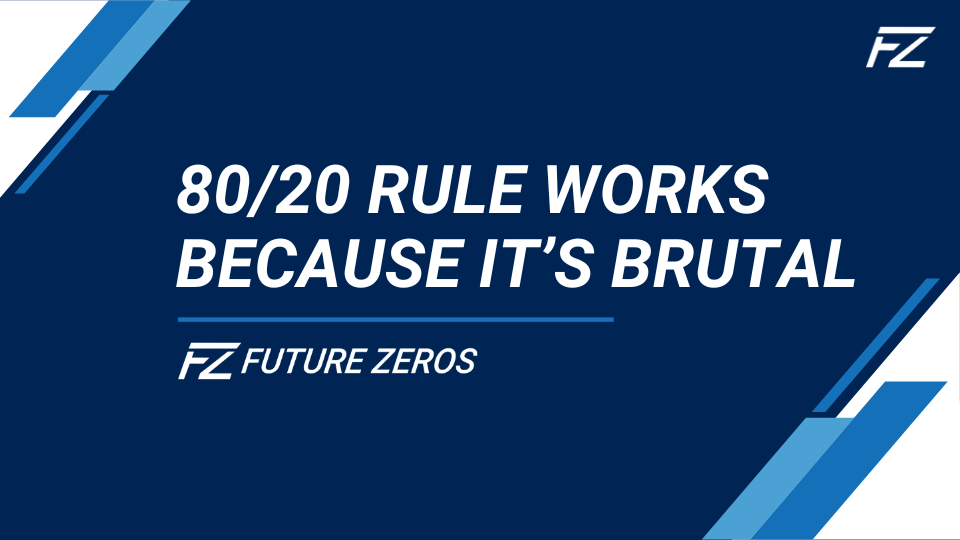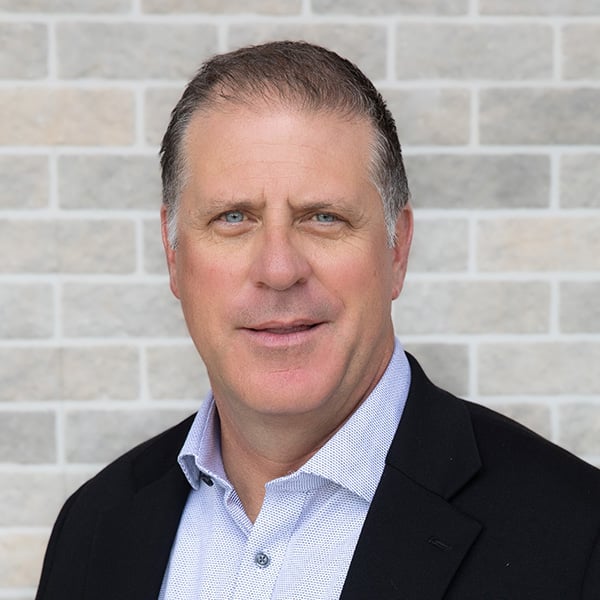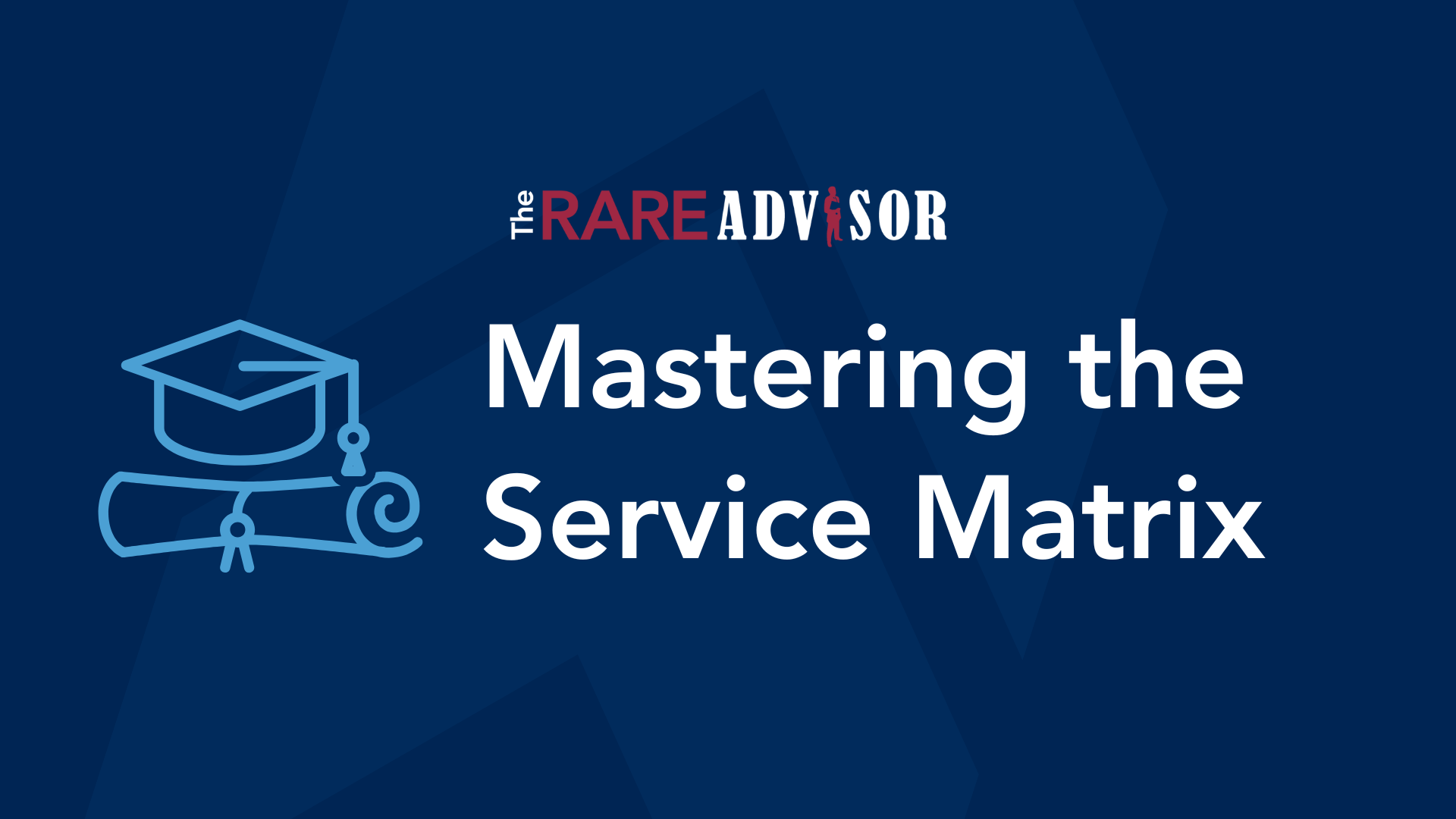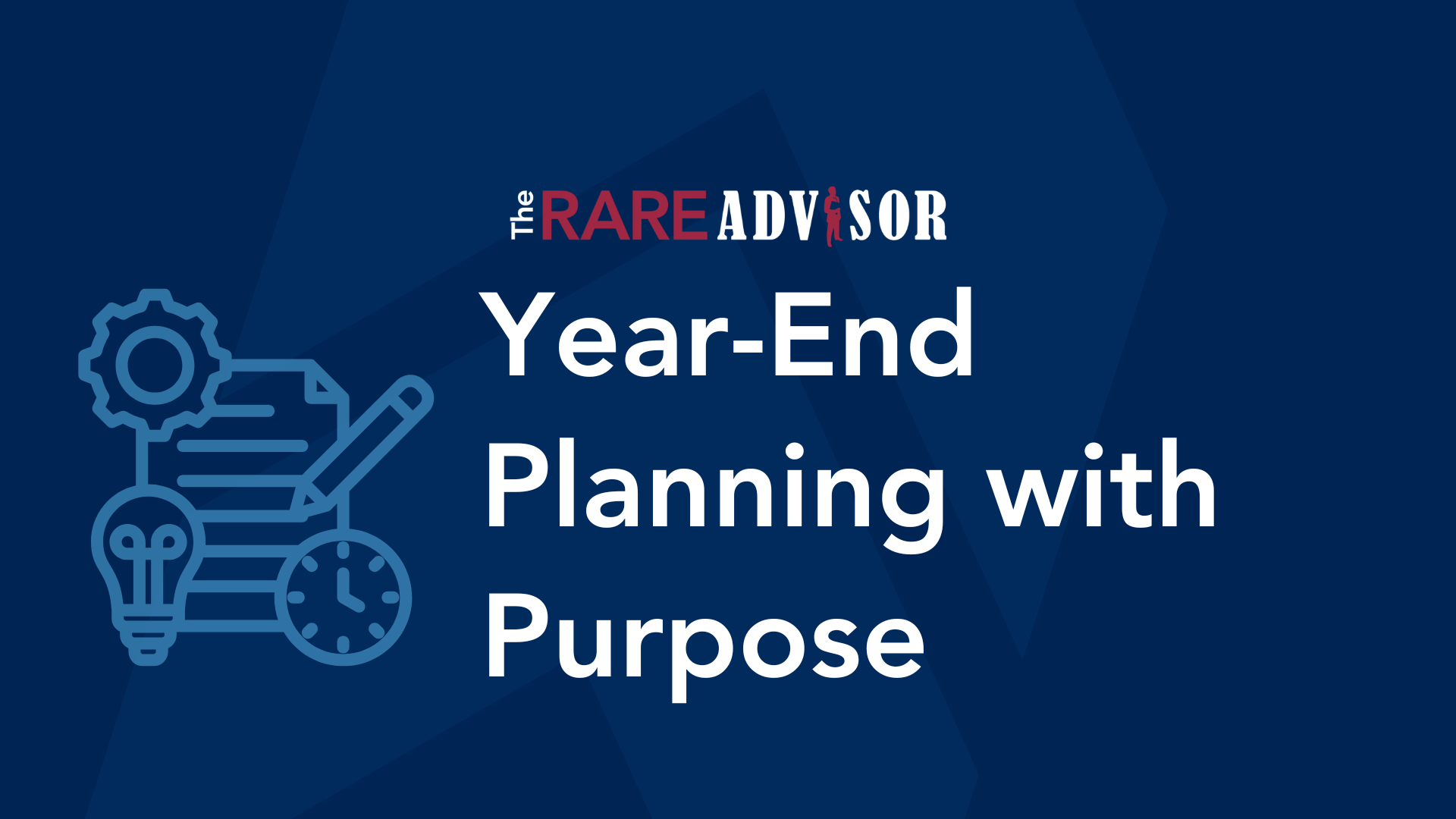The 80/20 Rule Works Because It’s Brutal

How are you applying the 80/20 rule? What does it really mean when you look at it from a revenue lens vs. a profit/EBITDA lens? The 80/20 rule is dramatically different based on how you use it and that’s what makes it so brutal and so useful. In this episode of Future Zeros, we’ll dive deeper into client segmentation and how it impacts the bottom-line profit of your practice.
You cannot have a legitimate discussion about tacking zeros onto the valuation of your practice if you have not dealt with client segmentation. And that's not just the segmentation of the revenue that those clients bring in and groupings from top down to bottom, but more specifically, the expense burden that then goes along with the services provided based upon what level of client they are. This is unbelievably important, and you really have to dive into it. It's about minimizing risk in your practice and maximizing growth. And in order to do that, you have to start with the Pareto Principle discussion. Now if you're not familiar with that terminology, you probably know it better as the 80/20 rule. Now the 80/20 rule is unbelievably powerful, and in ways that most people just kind of jet past. They assume they understand what the 80/20 rule means, and they go past the most important part of it.
So there was a great article from Forbes Magazine back in 2022 and it was titled, "The 80/20 Rule is Brutal. That's Why It Works". That's a pretty powerful statement. And it's a pretty accurate statement. But it's interesting, because what the 80/20 rule is really about is understanding the differences between revenue and profits. So at the revenue side of the equation, the 80/20 rule is probably what you already know - that 20% of your clients drive 80% of the revenue. Now, if you peel that back one more layer what you'll find is the next 30% of your clients. So the first grouping after the top 20, the next 30% of the clients generate, on average, 16% of the revenue. So that's the top half of your book of business. The bottom half of your clients, or the bottom half of your book of business, drives therefore only 4% of your overall revenue.
So here comes the crux in the matter. If you have not gone through client segmentation processes (which we do a tremendous amount of work in that area here at USA Financial if you need assistance there) - when we go from revenue over to profits, if you are treating all clients the same, the average business then would find that the top 20% of their clients are driving 150% of their profits. Let that sink in for a minute. We're not talking about revenue. We're talking about profits, bottom line, EBITDA. The top 20% of your clients are driving 150% of your profits, which means the bottom 80% of your clients are sucking you back down to 100% of your profits. Therefore, the top 20% of your clients are essentially underwriting the experience and the services for the bottom 80%. Now imagine if those clients knew that - you'd probably have a problem on your hands. But now that you know that you have an even bigger problem, because you're giving away profits. You need to identify and subset and segment those clientele and coordinate that over against the services and the experience provided so that they line up appropriately. Each subset of your client base should stand on its own two legs from a profitability standpoint. And if that's the case, now the top 20% becomes ultra profitable. But that profit comes all the way down because the bottom 80% is now not sucking away 50% of the profits. It's actually, even if it just breaks even, now you're at a 50% gain overall. So, it's a really powerful concept. The difference is understanding the revenue portion of the 80/20 rule and contrasting it against the profit portion, or the EBITDA portion, of the 80/20 rule. We embrace this. We coach to it. We mentor to it. We'll help you get there if you don't know how.
--
Future Zeros is a series for financial advisors who want to increase the value of their firm today and in the future. Your host, Mike Walters (CEO of USA Financial), digs into the nuances of mergers, acquisitions, and succession within the financial advice industry to help you add “future zeros” to your bottom line. Whether you are nearing an exit, just entering the business, or in the middle of building your practice, the Future Zeros series will provide thoughtful insights into how to grow your practice the right way in order to maximize your future value and minimize the risk associated with doing so.
Author Info

Mike Walters is the Chief Executive Officer (CEO) of USA Financial, leading the firm since its inception in 1988. Mike is committed to...
Related Posts

Behavioral Finance, Simplified: 5 Biases Advisors Must Use in Their Marketing
In this episode of Financial Advisor’s Marketing Playbook, host Mark Mersman breaks down five core behavioral biases—loss aversion, status quo bias, anchoring, choice overload, and social proof—and shows how each can be translated into clear, compliant marketing messages that resonate with real human decision-making. You’ll learn how to reduce cognitive load, make emotion visible, eliminate friction, and set deliberate anchors in your website copy, emails, seminars, and first meetings. If you want your marketing to reflect how clients actually think and choose advisors, this practical framework will help you shift from a purely logical approach to one that validates emotions first—and earns trust that clients can later justify with facts.

Mastering the Service Matrix: Elevate Client Experience & Drive Advocacy
In this episode of The Rare Advisor, Aaron Grady and Allan Oehrlein dive deep into two essential tools for modern advisory practices: the service matrix and the stewardship framework. Discover why moving from a reactive to a proactive service model is critical for consistency, scalability, and client advocacy. Learn how these frameworks help advisors deliver predictable, high-touch experiences, segment clients effectively, and create professional contrast that sets your firm apart. If you want to elevate your client experience and build loyalty that lasts, this conversation is packed with actionable insights.

Year-End Planning with Purpose: Becoming the Advisor of the Future
In this episode of The RARE Advisor, Aaron Grady and Duncan MacPherson explore how financial advisors can approach year-end planning with intention and purpose. Rather than focusing solely on metrics and spreadsheets, they discuss the importance of aligning your “why” with your process and practice. Drawing on Japanese philosophies like Ikigai, Kaizen, Kintsugi, and Wabi Sabi, they share insights on creating a more meaningful, resilient, and sustainable business. Learn how embracing continuous improvement, authenticity, and technology can help you become the advisor of the future.

Behavioral Finance, Simplified: 5 Biases Advisors Must Use in Their Marketing
In this episode of Financial Advisor’s Marketing Playbook, host Mark Mersman breaks down five core behavioral biases—loss aversion, status quo bias, anchoring, choice overload, and social proof—and shows how each can be translated into clear, compliant marketing messages that resonate with real human decision-making. You’ll learn how to reduce cognitive load, make emotion visible, eliminate friction, and set deliberate anchors in your website copy, emails, seminars, and first meetings. If you want your marketing to reflect how clients actually think and choose advisors, this practical framework will help you shift from a purely logical approach to one that validates emotions first—and earns trust that clients can later justify with facts.

Mastering the Service Matrix: Elevate Client Experience & Drive Advocacy
In this episode of The Rare Advisor, Aaron Grady and Allan Oehrlein dive deep into two essential tools for modern advisory practices: the service matrix and the stewardship framework. Discover why moving from a reactive to a proactive service model is critical for consistency, scalability, and client advocacy. Learn how these frameworks help advisors deliver predictable, high-touch experiences, segment clients effectively, and create professional contrast that sets your firm apart. If you want to elevate your client experience and build loyalty that lasts, this conversation is packed with actionable insights.

Year-End Planning with Purpose: Becoming the Advisor of the Future
In this episode of The RARE Advisor, Aaron Grady and Duncan MacPherson explore how financial advisors can approach year-end planning with intention and purpose. Rather than focusing solely on metrics and spreadsheets, they discuss the importance of aligning your “why” with your process and practice. Drawing on Japanese philosophies like Ikigai, Kaizen, Kintsugi, and Wabi Sabi, they share insights on creating a more meaningful, resilient, and sustainable business. Learn how embracing continuous improvement, authenticity, and technology can help you become the advisor of the future.

